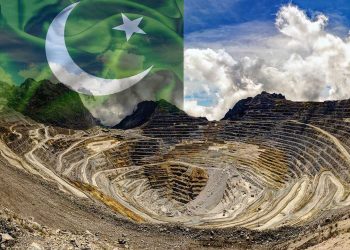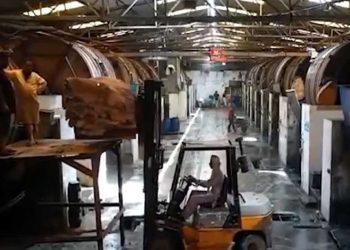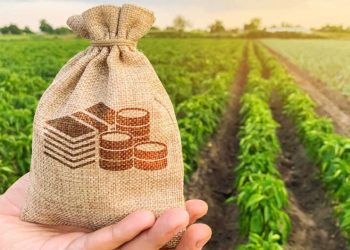In the face of declining natural gas reserves, Pakistan has detected promising indications of substantial shale gas reservoirs in a well located in Hyderabad. According to a USAID study, Pakistan boasts more than 3,000 trillion cubic feet (TCF) of shale gas resources across various shale horizons.
The well in question is the KUC-1 pilot well in Hyderabad, which was initiated by the Oil and Gas Development Company Limited (OGDCL) in 2020. OGDCL experts have vertically drilled the well, uncovering two layers of rocks containing abundant shale gas. Their next step involves drilling vertically into a third layer, scheduled for the following month.
For the vertical and horizontal fracking of these layers, OGDCL has already secured an agreement with Schlumberger, Pakistan. Dr. M Saeed Khan Jadoon, adviser to OGDCL on oil and gas exploration and head of the shale gas cell, emphasized OGDCL’s commitment to enhancing the expertise of its personnel in the shale gas cell. Some members were sent to China and the USA to stay updated on the latest shale gas discovery techniques.
Dr. Jadoon revealed that horizontal drilling in the pilot well will commence in three months and may conclude by August 2024. He noted that the entire vertical and horizontal drilling process is expected to take 3-4 years, costing between $25-$30 million, with delays caused by COVID-19 and floods. After completion, OGDCL plans to attract investors based on the data collected from vertical and horizontal fracking, who will finance commercial shale gas exploration.
Recovering shale gas commercially is a capital-intensive endeavor, estimated at $10-$15 per mmBtu. OGDCL aims to entice investment by sharing the actual production potential of Pakistan’s shale gas reservoirs with potential investors. The success of this pilot well will serve as a blueprint for future shale gas exploration in Pakistan, potentially leading to the drilling of additional pilot wells to assess shale gas trackability and productivity in the region.
The Sember Shale, primarily located in Pakistan’s lower and middle Indus basin, is renowned as a rich source of rock with substantial thickness. Currently, OGDCL contributes significantly to oil and gas production in Pakistan, producing approximately 35,000 barrels of oil and 800 million standard cubic feet per day of gas, accounting for 47% of oil and 30% of gas production in the country.












